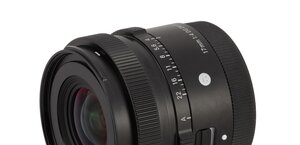Samyang 16 mm f/2.0 ED AS UMC CS
3. Build quality
In the photo below the tested lens is positioned between two Tokinas, the 11-16 mm f/2.8 II and the 12-28 mm f/4.0.
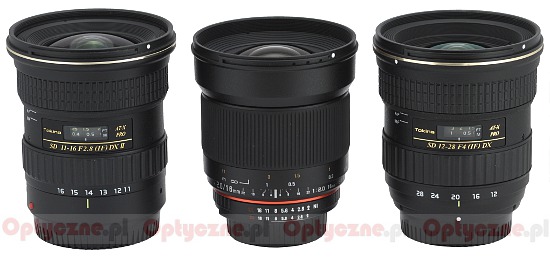 |
Please Support UsIf you enjoy our reviews and articles, and you want us to continue our work please, support our website by donating through PayPal. The funds are going to be used for paying our editorial team, renting servers, and equipping our testing studio; only that way we will be able to continue providing you interesting content for free. |
- - - - - - - - - - - - - - - - - - - - - - - - - - - - - - - - - - - - - - - - - - - - - - - -
The tested lens starts with a metal mount, surrounding contacts and a rear element, 21 mm in diameter. The element is immobile and situated at the same level as the mount when set at infinity. It hides slightly inside the barrel while you pass to the minimum focus distance.
The first element of the proper casing of the lens is an aperture ring. It moves every 0.5 EV step. Due to the contacts you can also control the aperture from the menu level of a camera with 0.3 EV step.
You have to mention here that the contacts, which make the communication with a body and aperture control from the camera level possible, are not featured in the current Canon mount version of this lens. In that case the aperture can be changed only every 0.5 EV step and in EXIF there is no indication of the focal length or aperture values used.
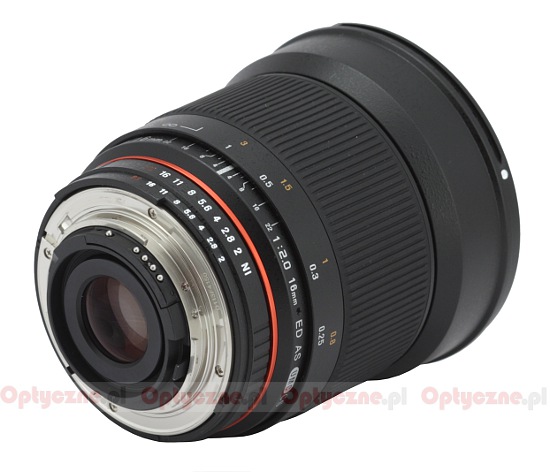 |
The next element is a narrow, immobile ring where you can find the name and the parameters of the lens and depth of field values by f/22, f/16, f/8 and f/4, along with unmarked values by f/11 and f/5.6. Further on there is a manual focus ring. It is very wide (41 mm) and mostly covered by comfortable, rubber ribbing under which there is a distance scale expressed in feet and metres. The ring is well-damped and it moves evenly at longer scales; however a small slack at the very beginning can be a bit of a problem. After you reverse the direction of the movement the first degrees of the turn don’t change of the position of elements. Only after a while the ring ‘catches up’ and starts setting the focus properly. Running through the whole scale takes a turn through 160 degrees – it is a huge value, worth a good manual device and allowing you very precise settings.
The last element on the body of the lens is an immobile, smooth ring with a hood mount at the end. The front element is 47 mm in diameter, a bit convex and movable. It is surrounded by a filter thread, 77 mm in diameter.
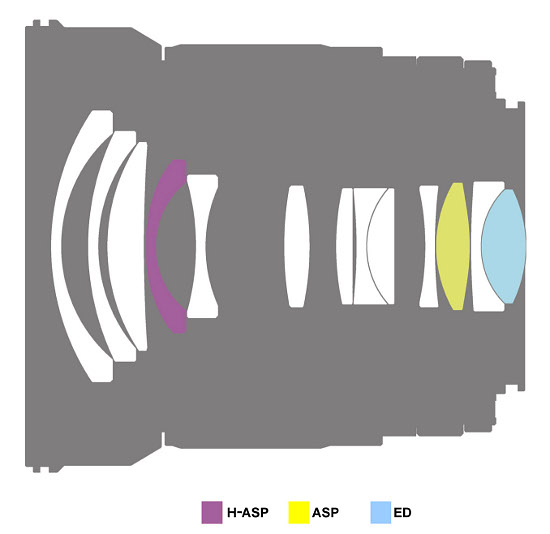 |
When it comes to the optical construction you deal here with as many as 13 elements positioned in 11 groups – much more than in case of all other full frame 2/24 constructions we’ve tested before. Additionally the producer used one ED element with a very low dispersion ratio, an aspherical one, made of optic glass, and one aspherical hybrid as well. The elements are covered by a multi-layered and anti -reflection UMC coating which is supposed to ensure very good light transmission. Inside the construction you can also find a circular aperture with eight diaphragm blades which can be closed down to a value of f/22.
Buyers get both caps, a petal-type lens hood and a soft pouch for the lens in the box.
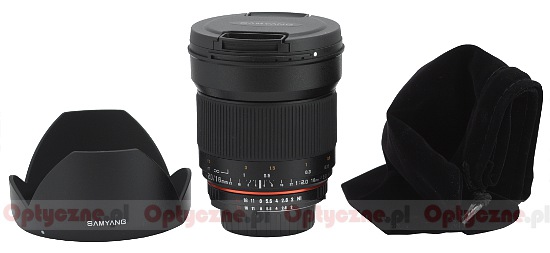 |





